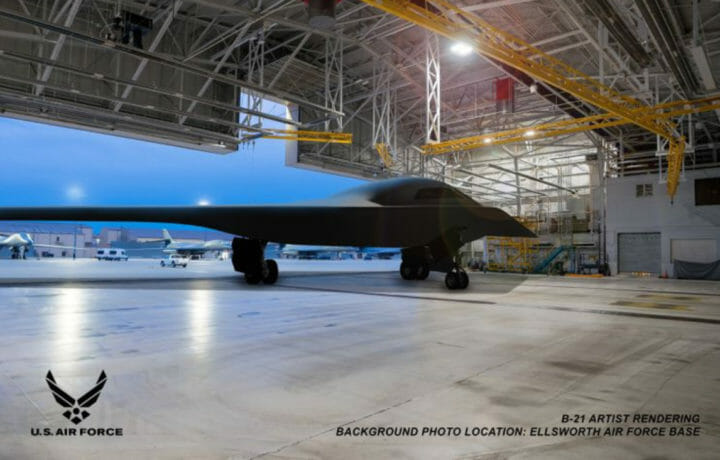Historically, DoD programs do not run under budget. But the new B-21 Stealth Bomber has been reported to being below the U.S. Air Force’s budget of the $25.1 billion projection. Most often, leaders are dealing with projects that not only are delayed due to rising costs but also time delays. This update for the B-21 is an early success story.
The B-21 Raider is replacing the B-2 Spirt that is expected to retire in the early 2030s. The B-21 will be capable of penetrating the toughest defense to deliver precision strikes anywhere in the world. It is designed to be long-range, highly survivable, and capable of carrying a mix of conventional and nuclear ordnance. It will join the nuclear triad as a visible and flexible nuclear deterrent, supporting national security objectives and supporting U.S. allies.
In an update provided by the assistant secretary for acquisitions, Andrew Hunter revealed, “We had money in the program budget that went beyond the contractually required payments.” They were able to target the money for early spending on riskier aspects of the program. And while the amount Northrop Grumman was able to save is classified, current estimates for the B-21 are that it will likely cost $203 billion to develop, purchase, and then operate 100 aircraft for 30 years.
One reason Northrop Grumman was able to make such advancements is because they used the information gained from the creation of the B-21’s predecessor – the B-2 Spirit. In an interview with Breaking Defense, Steve Sullivan, vice president, Strike Division talked about how Northrop Grumman has applied new innovations in supportability to the program.
Sullivan stated, “Today, with the B-21 Raider, our team has made maintainability an equally important requirement to stealth performance, and the results have been better than we could have hoped. Through the application of lessons learned on B-2 and other stealth aircraft, and the use of digital engineering techniques, not only do we have a design that has significantly improved over the B-2 from both survivability and aero-performance perspectives, we also now have a coating system that is as revolutionary in its maintainability as the original B-2 systems were in their stealth performance.”
While the initial projection of seeing the B-21 fly in mid-2022 was updated to 2023 by Randall Walden, director of U.S.A.F.’s Rapid Capabilities Office in May 2022. He said, “The data we are seeing back from the load calibration has been very promising and consistent with digital models. We will complete these tests in the coming weeks and conduct a series of final systems installs and coatings before ultimately moving into flight line ground test operations after rollout.”
Currently, there are six B-21s in production at Plant 42 in Palmdale. And while the general appearance of the B-21 is not a secret, once the aircraft moves outside of the factory more details will be known. So far, the Air Force has revealed its overall wing shaper in 2016, and two subsequent “artist’s interpretations” in January 2020 and July 2021. One thing that has been missing from the new drawings is the redesigned air intake. And once official testing takes place, it will be harder to keep those redesigns secret. There is still a lot we don’t know about the B-21, but it is exciting to be one step closer to seeing the new aircraft.




